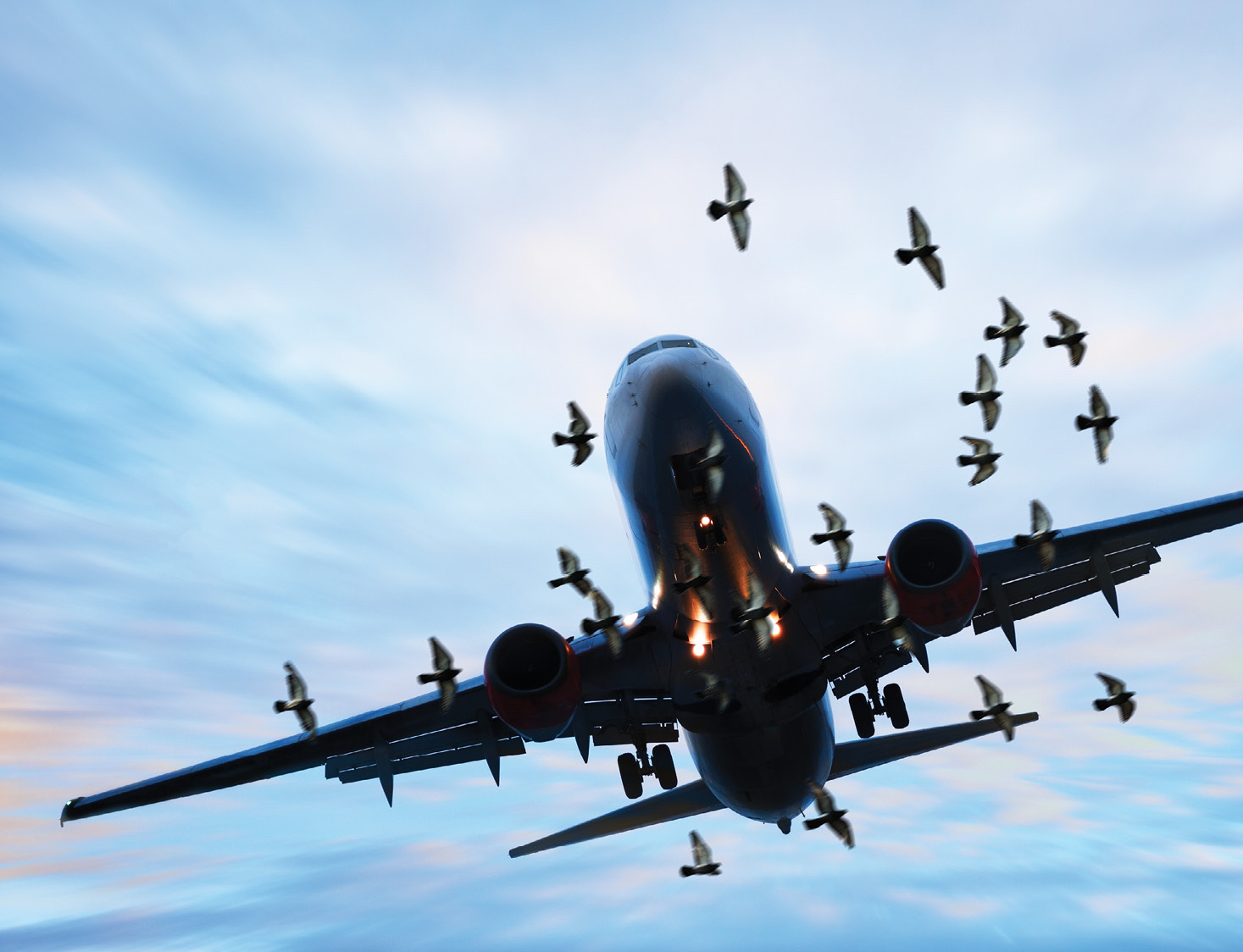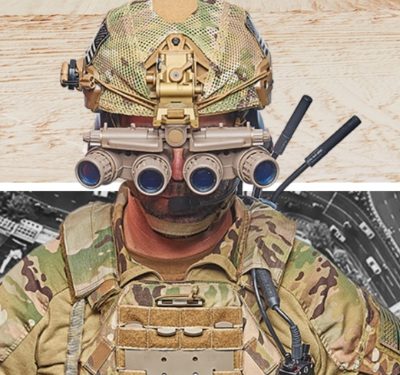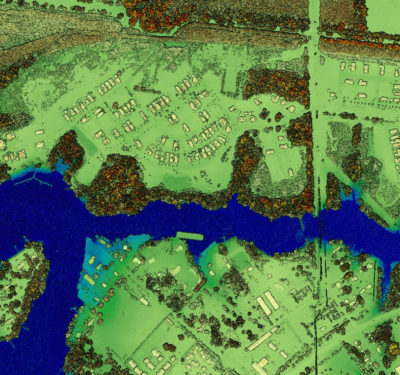
Collisions with birds can threaten the integrity of airplanes and the safety of their passengers. Now scientists are developing ways to use drones to herd flocks of birds away from airports, potentially helping prevent dangerous bird strikes.
Tough To Fool
Collisions that birds and other wildlife have with aircraft cause more than $1.2 billion in damage to the aviation industry annually worldwide. In the United States, 142,000 bird strikes destroyed 62 civilian airplanes, injured 279 people and killed 25 between 1990 and 2013. Similarly, in the United Kingdom, there were 1,835 confirmed bird strikes in 2016, or about eight for every 10,000 flights, and Korean civil aircraft suffered more than 1,000 bird strikes between 2011 and 2016, according to experts.**
Airports and researchers have explored a variety of ways to reduce the risk of bird strikes on airfields. Such bird-scaring techniques include lasers, flares, distress calls, loud noises from shotguns or cannons, inflatable scarecrows, radio-controlled (RC) planes, dogs, birds of prey, and eliminating surrounding areas of crops that birds eat and hide in. However, “according to surveys by the International Bird Strike Committee, none of those systems work adequately,” said Soon-Jo Chung, an associate professor of aerospace at the California Institute of Technology and a research scientist at NASA’s Jet Propulsion Laboratory in Pasadena, California.
The problem is birds get used to most bird-scaring techniques, or they come back after a threat has gone, or these methods just scatter birds to different parts of the airfield, where they remain a threat. “Simply put, birds are too intelligent,” Chung said.
Drones Versus Birds
Chung has previously developed a variety of flying robots, including the most advanced bat-winged robot developed yet, and a bird-like flapping-wing robot that could autonomously land and perch. He and his colleagues began investigating ways to prevent bird strikes after a flock of Canadian geese knocked out both engines of US Airways flight 1549 shortly after takeoff in 2009. This resulted in the “Miracle on the Hudson,” where pilots Chesley “Sully” Sullenberger and Jeffrey Skiles successfully performed an emergency landing on the Hudson River. “The passengers on Flight 1549 were only saved because the pilots were so skilled,” Chung said.
The only proven lasting way of preventing bird strikes is by using raptors such as falcons to scare away other birds, but this strategy is not adequate on a wide scale. “Trained falcons have been used at John F. Kennedy Airport and McGuire Air Force Base, but real birds are too difficult to control and train,” Chung said. “Furthermore, the most effective performers—for example, peregrine falcons—are endangered species.”
Prior work tried using remotely controlled (RC) airplanes that resemble birds of prey to prevent bird strikes. However, RC airplane pilots might find it difficult “to learn and adapt to evolving flocking behaviors of a large number of birds,” Chung said.
Instead, Chung and his colleagues explored using unmanned aircraft systems (UAS) to direct birds in an automated manner. “I wanted to develop an autonomously operating drone that could figure out the best paths around a flock of birds to effectively herd the flock to a desired direction—for example, away from an airport,” Chung said.
Flocking Algorithms
The scientists began with algorithms known to accurately model how birds fly in flocks. The researchers next incorporated research that modeled how flocks of starlings and schools of fish evade one or more predators. They developed an algorithm through which a single UAS might safely divert an entire flock of birds away from a designated space without breaking their formation.
Each bird in a flock reacts to changes in the behavior of its closest neighbors. Effective herding requires an external threat, such as a drone, positioning itself in such a way that it encourages the birds along the edge of a flock to move in a way that encourages the entire flock to alter its course while not causing the birds to panic and disperse. This new work builds on algorithms designed for herding sheep, which only needed to work in two dimensions on the ground instead of three in the air.
Chung and his colleagues tested their algorithm in experiments where they attempted to use a quad-rotor drone to herd flocks of egrets and loons in Daejeon, South Korea. Another quad-rotor drone hovered at a high altitude with a camera pointing downward to record the trajectories of the herder drone and the birds.
The best results occurred when a drone flying toward a flock gave the birds enough time and distance to steer away horizontally from their original course. If a drone approaches a flock too abruptly, the birds may break or suddenly divert vertically, but still ultimately fly toward their original destination.
“We have validated for the first time that we can effectively herd a flock of live birds moving in a three-dimensional world using a drone,” Chung said.
“The aerial robotics community has drawn a lot of inspiration from birds, both in terms of flight dynamics and in terms of flocking behaviors,” said Magnus Egerstedt, chair of the Georgia Institute of Technology’s school of electrical and computer engineering in Atlanta, who did not take part in this research. “To see the field come full circle, where we not only draw inspiration from birds but actually use these ideas to interact with and control bird flocks, is both amusing and exciting.”
The Future of Herding
In principle, any conventional drone could perform such herding, Chung said. “This is one important step toward automating a drone-based approach to herd flocks of live birds,” Chung added.
Only the number and size of the incoming birds limit the effectiveness of the algorithm, Chung said. The researchers plan to explore ways to scale this project up for multiple drones interacting with multiple flocks.
“I consider this to be a first promising step,” Egerstedt said. “Future work will have to be more explicitly informed by actual flocking bird behaviors to reach its full potential.”
Currently, drones are generally not allowed to operate near airports, said David Hyunchul Shim, an associate professor of electrical engineering at the Korea Advanced Institute of Science and Technology in Daejeon, South Korea. To steer birds away from airfields using drones, “there should be some special arrangements made with the airports,” said Shim, who took part in the bird-herding drone research.
“I recently talked to Incheon airport authorities in Korea, and they were interested in our work for potential applications,” Shim added. “Currently, they use hunters with rifles to scare birds away, or sometimes they actually shoot them down so that the birds can realize the rifles are a real threat. Birds are smart, and they get easily desensitized for non-lethal threats such as scarecrow or blank shots.”
Drones might also herd birds away from areas other than airports. For instance, hundreds of thousands of birds may die annually due to collisions with the spinning rotors and support towers of wind farms. Although wind turbine blades might generate turbulence that can interfere with UAS flight, drones could try to avoid turbulent regions by defining a larger protected zone than currently used in the bird-herding algorithm, Chung said.
In the future, this research might also lead to drones autonomously herding livestock. Farmers in California, Ireland, Iceland, Australia, New Zealand and elsewhere have already experimented with piloting drones to herd cattle and sheep, but not in an automated manner.
“I remember watching a video where a large sheep farm owner herded sheep using her small Schweizer helicopter,” Shim said. “So I think drones can be used, but they should be somewhat larger to draw the attention of the animals. Also, the herding dynamics will be different than for birds.”






